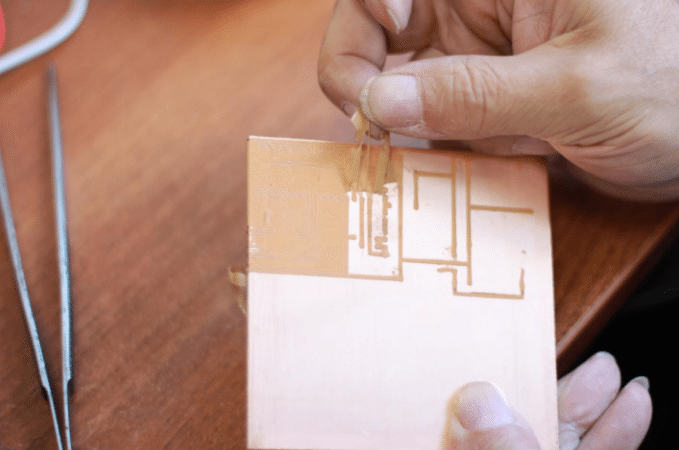3D打印机为房屋生产和快速原型制作开辟了无限的可能性。现在,您可以在3D程序和3D打印中轻松地创建任何模型。但是直到现在,只有很少的人想到了3D打印电子设备或该解决方案(模型)的可能性。
到目前为止,要制作一个原型的电路板,必须用焊接铁或订购短期生产运行。但是,我们中的许多人都可以使用常规的铁和激光打印机将其制成。
不仅任何3D打印机,而且任何DIY雕刻师都适合它或Makeblock绘图仪的构造函数XY类型
为此,我们需要一个铜玻璃纤维板,任何深色乙烯基薄膜(激光燃烧的任何深色膜都可以合适),氯化铁(在化学试剂的商店中公开出售),当然,还安装了二极管激光器3D打印机。它的功率输出不是那么重要,但是我们建议使用超过2W(2000兆瓦)的二极管激光器。
在任何3D打印机上安装激光非常容易…
How to install it on an Ultimaker
So, let’s begin:
1. Create a circuit board model using any program of an InkScape type (inversion picture. Later, we’ll explain why inversion).

2. Convert it into the gcode.

3. Stick the vinyl film onto the copperized plate of glass fiber.


4.将乙烯基涂层玻璃纤维板放在3D打印机的工作台上,然后在激光切割 /雕刻模式下打开3D打印机。

5.激光将在乙烯基膜上燃烧一个要产生的图案的反转图像。

6. Dissolve the iron chloride powder in water (do not worry, no chemical reaction will follow)

7. Put the glass fiber plate into the iron chloride water for 45-60 minutes.

激光燃烧后,玻璃纤维表面上没有膜的铜将与氯化铁(铜蚀刻化学反应)反应,并进入溶液中,将干净的玻璃纤维留在反转图像的轮廓中。
Then, make holes for the necessary connectors with a small drill, or leave as is, and solder the connectors on top of the circuit board.
因此,我们已经告诉您如何使用3D打印机和激光器创建一个小型商店 - 用于电路板制造的实验室。
这项技术当然不是完美的,并且有几个缺点,但是它是有效的,可以在家和小型实验室使用。



